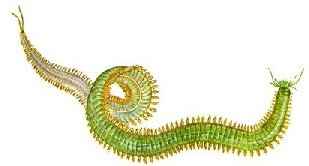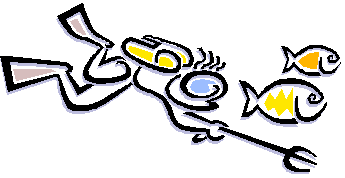Blood Worm

Glycera spp
Nereis spp.(shown)
Size: to 15", generally much smaller
Worms like this can be found anywhere from tidal flats to deep depths, burrowed in the sediment or hiding in crevices.
These segmented worms have four sharp teeth and can give you a good bite if you're not careful. They can also swim, although not very well. The "legs" are called parapodia and are actually gills. The best place to see a blood worm is at the bait shop. Also known as Clam Worms.


